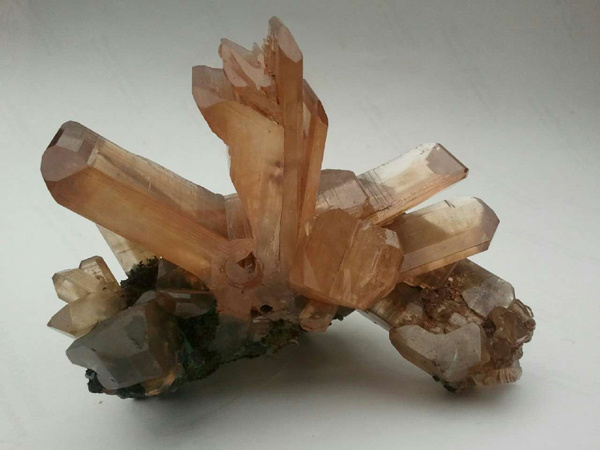Cerussite is a type of lead oxide mineral and belongs to secondary minerals. It is formed gradually from primary minerals under the weathering action and the influence of underground water containing carbonate. When galena oxidizes, lead sulfate, which is less soluble in water, is first formed. If it encounters a solution containing carbonate, cerussite is further formed. The ore dressing process of cerussite mainly includes several stages: crushing, grinding, flotation, and dewatering. After ore dressing and smelting, the resulting lead can be used in industries such as mechanical engineering, energy, and pigments.

Here, taking a high-grade cerussite deposit in Myanmar as an example, the ore dressing process of cerussite is briefly described.
Ore Properties
The main useful metal element in the ore is lead, with a grade of 24.1%. Sulfur, iron, and zinc are present in very small amounts, while calcium, magnesium, and aluminum are present in relatively small amounts. The ore has a high silica content. Carbonates dominate in the compounds of lead, followed by small amounts of silicates and sulfides. It can be determined that the main useful minerals in the ore are cerussite, followed by lead sulfate, and a small amount of galena.
Crushing and Screening
A two-stage closed-circuit crushing process is employed. The extracted cerussite ore is initially crushed by a jaw crusher and then further processed to a certain particle size by an impact crusher.
Grinding and Classification
Grinding, as a preparation operation before flotation, aims to liberate useful minerals and gangue minerals in the ore. Sufficient liberation is advantageous for flotation, while over-grinding should be avoided to prevent adverse effects on flotation. Selecting an appropriate grinding fineness is a prerequisite for obtaining good flotation indicators.
During grinding fineness tests, it was found that when the grinding fineness is -0.074mm at 60%, the concentrate grade is high at 62.21%, but the recovery is low at only 34.44%. This indicates that the ore has not completely liberated at this fineness, with only a part of minerals separated, and some useful minerals are still mixed with gangue. As the grinding fineness increases, the concentrate grade gradually decreases, and the concentrate recovery rate increases. Considering various factors, the optimal grinding fineness is determined to be -0.074mm at 85%.
Agitation Flotation
Commonly used flotation methods for cerussite include sulfidization-xanthate flotation, chelating agent-neutral oil flotation, leaching flotation, and direct flotation with anionic collectors. In this case, the sulfidization-xanthate flotation method is used.
After rigorous ore dressing test studies, the final flotation process is determined to be two roughing, one scavenging, and one cleaning, with the return of middlings. The dosage of sodium sulfide for roughing 1, roughing 2, and scavenging is 500g/t, 500g/t, and 250g/t, respectively, totaling 1250g/t. The sulfidization time for each stage is 5 minutes. The collector used is butyl xanthate, with dosages of 600g/t, 600g/t, and 300g/t, totaling 1500g/t. The dosage of No. 2 oil is 40g/t, 40g/t, and 20g/t, totaling 100g/t. The final mixed lead concentrate obtained has a grade of 59.48% and a recovery rate of 91.69%, achieving good technical indicators.
Dewatering Stage
The lead concentrate slurry obtained after flotation contains a large amount of water, making it difficult to utilize. Therefore, it is further sent to a concentrator for high-yield concentration precipitation, and then dehydrated and dried again by a dryer to produce a higher quality lead concentrate powder.
Through the above ore dressing process, the processing of cerussite is completed, and a high-quality mixed lead concentrate powder is obtained. The lead concentrate powder has good density and ductility, suitable for smelting lead and manufacturing lead products. It can also be used in the production of batteries, radiation shielding materials, and other applications.